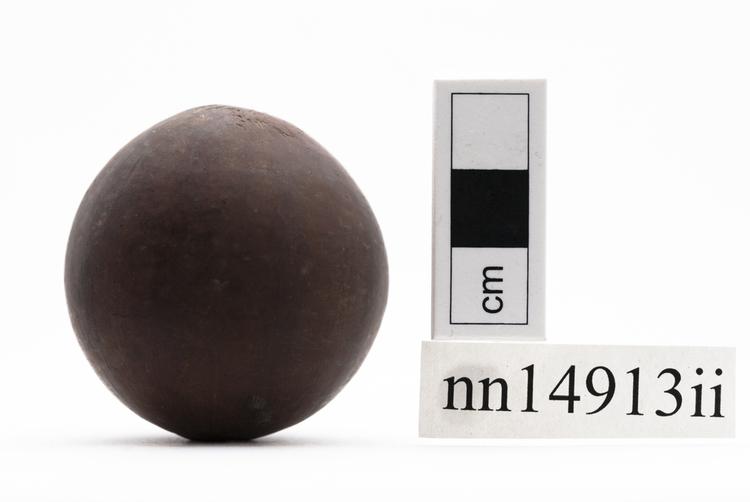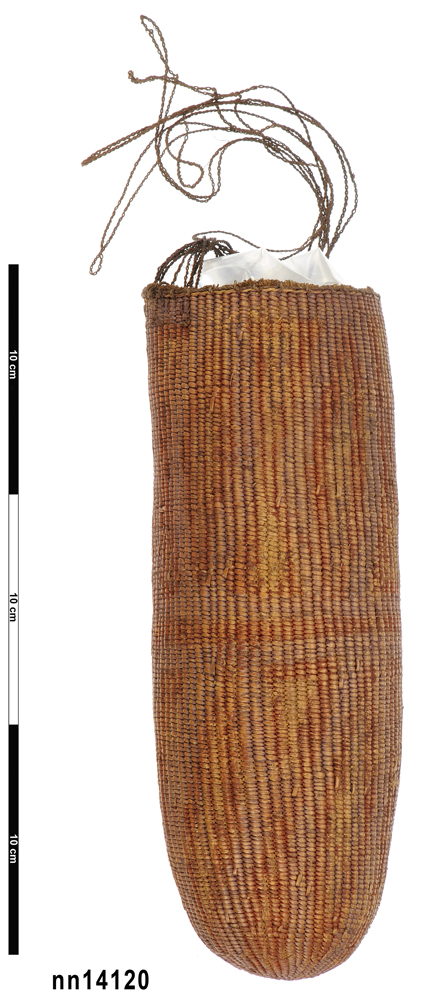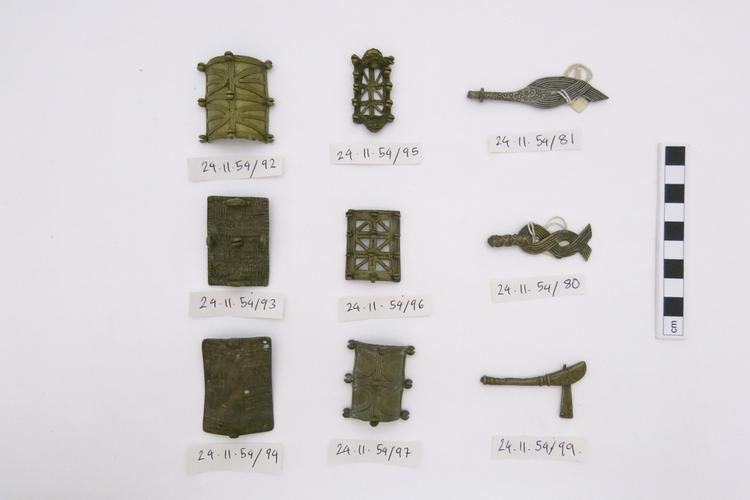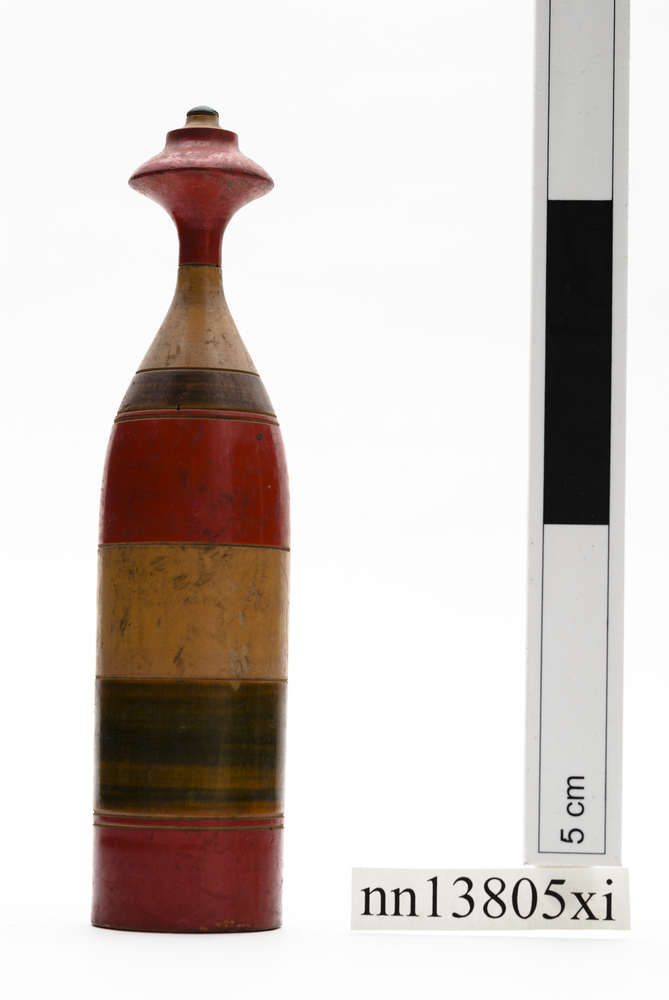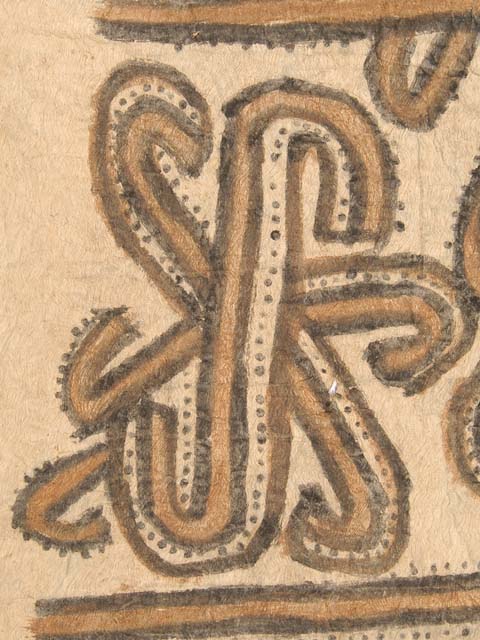
Rectangular cream barkcloth tapering to one side. The longer sides of the textile are plain. The light brown and black painted decoration consists of a central stripe framed and divided into 4 wider bands by 5 thinner bands. The thin bands consists of a wider centre and a thinner brown band either side, each outlined in black and framed by dots. The wider bands contain 2 or 3 curvilinear motifs consisting of overlapping S- or hook-shaped elements. Each of these elements consists of a brown and a dotted line framed and separated by thin black lines.
Woman’s Barkcloth Wrap, Embobi, Maisin People, Collingwood Bay, Oro Province, Papua New Guinea. Unlike some other New Guinea cloths, Maisin barkcloth uses the same Paper Mulberry bark (wuwusi, Broussonetia papyfera) as the fine cloths of the more remote Pacific islands. The Maisin make a number of different kinds of barkcloth: some are sacred and decorated with representational clan designs of animals, plants and so on. These are reserved for use during special clan rituals, and their photography is forbidden. More everyday barkcloths like this 1909 example bear these hand-painted Double-S motifs, which (in more recent cloths) have transformed into wildly meandering channels of switchbacks known as gangi-gangi. This broad, rectangular cloth is an embobi, and is worn by Maisin women as a long sarong. Men wear a long, narrower strip of cloth as a kilt called koefi. The black ink (mii) lines are always painted on first, with the dotted ornamentation (sufifi) following to add interest. Finally, the red ink (dun) infilling is applied. The Maisin are renowned in the local area for their barkcloth, which they trade with their neighbours to acquire pottery and other valuable commodities. Barkcloth, vegetable pigment. Early 20th Century. Collected by the Rev. A. K. Chignell during his time at the Wanigera Mission, and sold by his father to the Horniman Museum later in 1909.



